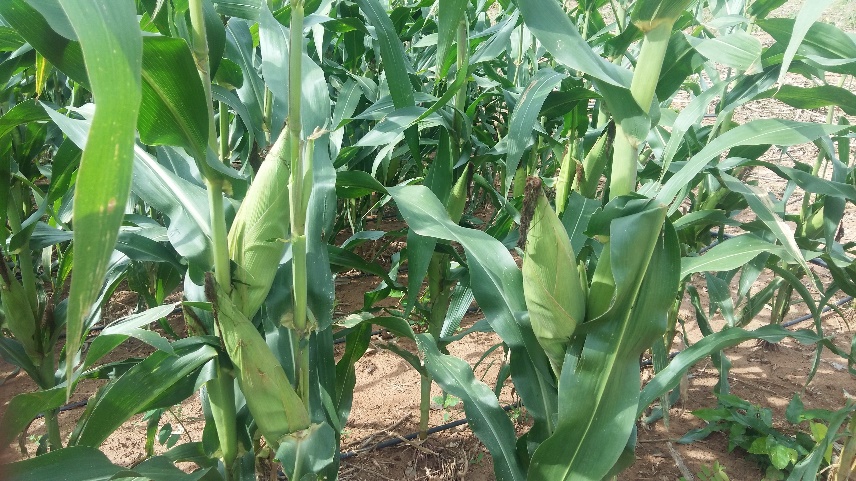2.1. Breeder Seed Production
To ensure protein quality and endosperm modification of seed, it is important that breeder’s seed be produced in half- sib isolation blocks. This is done in 3 stages described below:
Stage 1
- Plant 300-500 representative plants in isolation in breeder’s seed production field.
- At harvest, shell each ear separately.
Stage 2
- Plant each ear as a single female row
- Bulk equal quantities of each ear to plant as male rows for pollen pollination
- Plant 3 rows of female to 1 row of male in a half-sib isolation block. Female rows must be detasselled.
- Conduct mild selection by rejecting all rows that deviate from the variety description.
- At harvest, select the best representative rows and plants within rows of the variety under production to provide seed for the next seed production cycle.
- Select 1-2 ears from representative rows to constitute the 300 -500 female rows for the next production stage
- Conduct laboratory analysis of seed sample of the selected ears. Use only ears that have acceptable protein and tryptophan levels for the bulk seed to have unacceptably low protein quality. Note that laboratory analyses could be limited to every third cycle of breeder’s seed production to save time and money.
Stage 3
- Proceed to plant the third cycle of seed production as in cycle. After counting seed to plant as female in storage, and bulk the rest of the seed together with the remaining seed of the male rows to constitute the breeder’s seed for seed producers.
3.0. Foundation Seed Production
Foundation seed must be produced from a fresh stock of breeder’s seed and can be used re-used for 2 generations/cycles. The foundation seed producing companies should also maintain a quality check on their foundation seed blocks by conducting laboratory analyses. This will not only ensure that the benefits of protein quality are passed on to seed producers and, eventually, to farmers and consumers, but will also help breeder seed producers maintain the required quality standards of the variety. At this point we clear in my minds that no seed producer of QPM go through above criteria to ensure good quality protein seed maize to farmers. This changes genetic composition of the variety and we turn to blame farmers for low seed adoption.
What are we doing wrong?
The formal seed system is not offering farmers the quality product that they deserve at the right time, and in right quantity.
To optimize seed adoption rate, there is a need for industry players to consider traits that command price advantage and also traits that are essential for retaining comparative advantage.
What farmers pay for in the seed is genetic gain for consistent yield increases. Genetic gain could only happen through research!
Author
Amos Rutherford Azinu
Team Lead, LCIC

